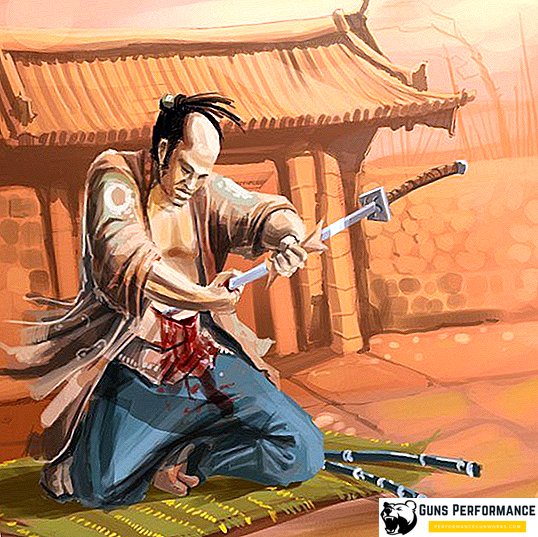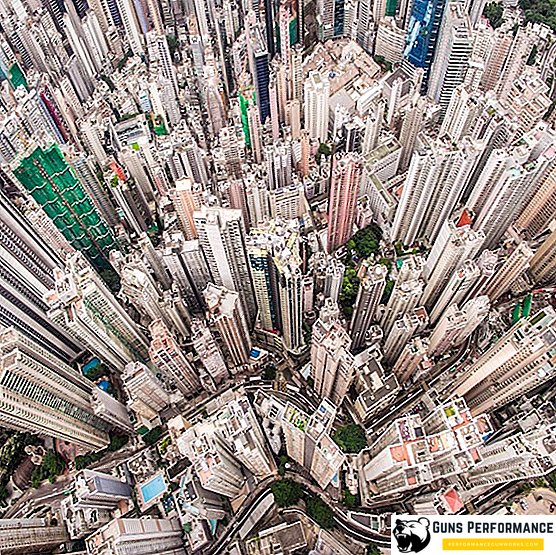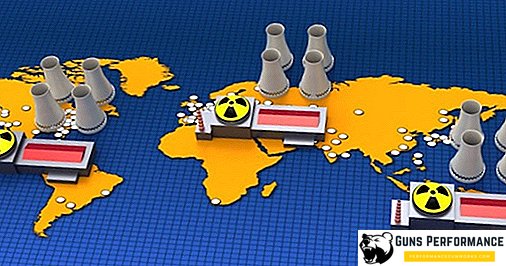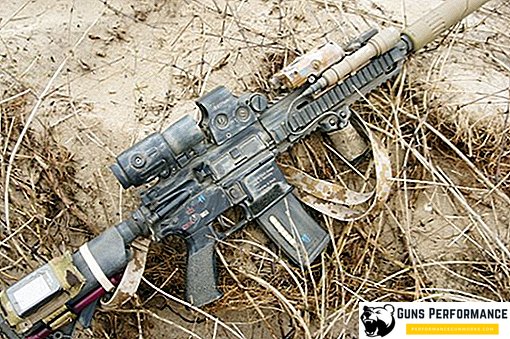For an uninitiated person, Japan seems to be a distant country where samurai still walk along the streets, only sushi is served on the table and everyone, without exception, makes hara-kiri for himself. To think so is not quite right, but to talk about it is to seem an ignoramus. However, in reality, this is far from the case. Japan is a country where the longest traditions followed the longest, and some of the rituals continue to be relevant today. Japanese rituals for a secular person may seem very cruel and inhuman, but if you understand the essence of civil-public relations, understand the processes in the life of Japanese society, much will become clearer. This fully applies to hara-kiri, a phenomenon in Japanese life and culture, about which we know very little. We like this word, but its meaning is far from the one that we put into it.

Where did it come from and what does it mean? What is the main confusion?
Harakiri is a colloquial word in Japanese, which literally means "cutting the belly." Although if you go into the analysis of the word and put it on the shelves, a slightly different meaning appears. The character "hara" in Japanese means soul, meaning or meaning intention. Needless to say that many nations have a special ritual attitude to the soul. So for the Japanese, the belly is exactly the place where the human soul is stored and the intention to free it in this way becomes clear. It is from this moment that a picture begins to emerge, which gives an explanation to many things. Call things by their proper names. What is customary in our country to associate hara-kiri is suicide, committed by any person from voluntary moral and ethical motives. In Japan, this expression has a different shade, more social. In Japanese society, when they want to say that someone has committed suicide, he has broken his stomach, they say hara-kiri.

In Japanese history and in literature, such an expression can never be found. Here they talk about such things from a different angle. Ritual suicide committed according to all canons and rules is called seppuku. What is the difference if both words are written with the same hieroglyphs. The difference is that hara-kiri is a Japanese reading of hieroglyphs, and seppuku is a Chinese reading of the same set of hieroglyphs. Seppuku and hara-kiri literally mean the same, i.e. method of suicide, only in each case has its own interpretation of the expression and meaning.
The main differences between the rituals of Harakiri and Sepukku
Immediately it should be noted that seppuku is a medieval custom and today in Japan they are spoken of only by recalling historical facts. If the harakiri caught on and became a household name in modern society, then seppuku was gradually forgotten. This expression is found in Japanese poetry and in the epic. There is no fundamental difference in meaning. Just hara-kiri, as a rule, made themselves commoners, then seppuku is the prerogative of the elite class. It was never possible to hear that a noble warrior or official, a member of the samurai clan, made himself a harakiri. It was accepted to present this event with special brilliance to the public. For this there was a special set of rules that clearly defined not only the motives that pushed the samurai to suicide, but also regulated the process itself.

It was not enough to take an ordinary knife and rip open his stomach. It was necessary to observe many subtleties and nuances before the soul of a samurai goes into another world. It should be borne in mind here that the life of a samurai always took shape in strict accordance with the code of honor - Bushido. It was there that a special place was given for the samurai’s death. The samurai from childhood had a special relationship to death. The most worthy death for members of the elite warrior caste was considered to be seppuku, perfected by all the rules and canons. Let us dwell separately on some moments of the ritual.
- Firstly, seppuku was often used as the execution of a guilty person. Instead of ripping up the belly, samurai, on orders from a lord or emperor, could be stripped of their heads
- Secondly, the ritual itself must show the samurai’s voluntary attitude towards the act of suicide, reveal the purity of his thoughts, the depth of repentance;
- Thirdly, the way of depriving oneself of life played a huge role.
For a samurai, it has always been important to take a decent death. Often this was done exponentially, in a specially played scene. When seppuku was done on orders, cutting off the samurai's head, they tried to save his honor and dignity. Independent decision to die meant a ripping of the abdomen. This act was preceded by thorough preparation. Of great importance was the choice of weapons for this purpose, the position of the body of a suicide. It is important to note the fact that every samurai was taught this ritual since childhood. For men, the bloodiest method of ripping up the abdomen was chosen, which left almost no chance of survival. Samurai girls for this purpose were treated more easily using kaiken. To deprive himself of life, it was enough for the girl to thrust a knife into the heart or to cut the jugular vein around her neck.

It was important for the girl to adopt a chaste posture, tying her legs together. Pose suicide should be similar to wilted flower.
The murder weapon was a samurai's personal weapon, knives and swords, which he received when he became a member of the military caste. Less commonly used special knife - Kugunsobu. The commoners usually used a special knife for hara-kiri. It could be a tanto cold weapon with a long and sharp blade or any other cold weapon with a sharp-edged blade.

In order for the act of suicide to be carried out according to all the rules, a special person, a kaysaku, watched the state of suicide, ready to cut off his head at any moment and stop his suffering.
The ethical side of harakiri and seppuku
In the Japanese tradition, rooted in the distant past, it was customary to believe in the multiple rebirth of the human soul, so it was important to pass away from life. For hara-kiri, no special conditions were required. It was enough for a samurai just to make a decision himself and commit an act of suicide in accordance with the traditions. Seppuku, on the contrary, demanded the creation of special conditions for the ritual. Carefully chosen venue of the ritual. The ceremony was necessarily attended by representatives of the authorities. The ceremony was conducted by a specially trained person in the presence of the Kaysaku.

If the samurai died in battle, there was no point in the ceremony. It is quite another thing when misdemeanors or unworthy behavior of a samurai fell out in peacetime. Then the ceremony was mandatory. It is seppuku, not hara-kiri. Reasons for a samurai to commit an act of suicide was enough. The most common reasons for conducting a ceremony include the following facts:
- "death to the next", i.e. suicide of a samurai after a lost lord or suzerain;
- suicide due to awareness of one’s own responsibility for the negative consequences;
- voluntary death due to their own convictions;
- suicide due to the inability to realize their own rage towards the enemy;
- hara-kiri due to its own financial or social insolvency.
Often in Japan committed acts of collective suicide. Harakiri often made loving couples whose life together was impossible due to caste prejudices. In a difficult situation, during famines, military actions and big family disgrace, parents and children did a collective act of suicide.

The whole ceremony samurai must go from start to finish, behave with dignity, do not scream and writhe in pain. The main thing is to show your death beautiful and to be worthy of it. If during an act of suicide, a samurai loses control of himself, this would amount to even more disgrace. In Japan, there was a tacit statistic that kept records of seppuku. In the literature it was often possible to meet fragments of the act of suicide of some noble grandee. It was decided to furnish seppuku in poetic and lyrical tones, comparing voluntary death with the act of purification.
Modern attitude towards hara-kiri and seppuku
Over time, the Japanese society, previously closed to the outside world, began to transform. Changed and attitude to death. Despite the fact that the society maintained a respectful attitude towards samurai, seppuku and hara-kiri became exclusively the prerogative of noble persons. Instead of suicide, poor nobles preferred to look for other ways out of situations. The long peace period that prevailed in Japan, beginning in the second half of the 18th century, served as a pretext for some rituals from the life of samurai to become purely symbolic.

The Bushido Code of Honor remained obligatory for high-ranking officials and military men. The military caste, which in Japan has always been considered the most influential, has retained its traditions. A special place was given to them and seppuku, which could still be heard during the Second World War. Hundreds of Japanese officers were doing seppuku before surrendering. A screaming fact is considered a massive seppuku, which was completely the officers of the Japanese army, when it became known that Emperor Hirohito abdicated the throne. The cases of hara-kiri among ordinary Japanese soldiers were not as widespread as among the officer class. The simple origin of the military and the natural desire to survive, having suffered the horrors and warfare, had an effect.
Officially, the rites of seppuku and hara-kiri were banned in Japan only in 1968, but even today there are cases when the descendants of samurai settle scores with life in a similar way.












